Related Research Articles

ECHELON, originally a secret government code name, is a surveillance program operated by the five signatory states to the UKUSA Security Agreement: Australia, Canada, New Zealand, the United Kingdom and the United States, also known as the Five Eyes.

Signals intelligence (SIGINT) is intelligence-gathering by interception of signals, whether communications between people or from electronic signals not directly used in communication. Signals intelligence is a subset of intelligence collection management. As classified and sensitive information is usually encrypted, signals intelligence in turn involves the use of cryptanalysis to decipher the messages. Traffic analysis—the study of who is signaling whom and in what quantity—is also used to integrate information again.
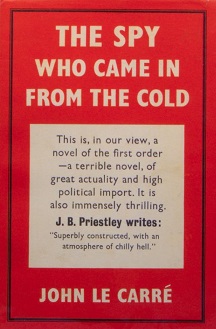
The Spy Who Came in from the Cold is a 1963 Cold War spy novel by the British author John le Carré. It depicts Alec Leamas, a British agent, being sent to East Germany as a faux defector to sow disinformation about a powerful East German intelligence officer. It serves as a sequel to le Carré's previous novels Call for the Dead and A Murder of Quality, which also featured the fictitious British intelligence organization, "The Circus", and its agents George Smiley and Peter Guillam.

Royal Air Force Menwith Hill is a Royal Air Force station near Harrogate, North Yorkshire, England, which provides communications and intelligence support services to the United Kingdom and the United States. The site contains an extensive satellite ground station and is a communications intercept and missile warning site. It has been described as the largest electronic monitoring station in the world.
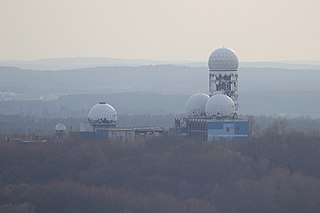
Teufelsberg is a non-natural hill in Berlin, Germany, in the Grunewald locality of former West Berlin. It rises about 80 metres (260 ft) above the surrounding Teltow plateau and 120.1 metres (394 ft) above the sea level, in the north of Berlin's Grunewald Forest. It was named after the Teufelssee in its southerly vicinity. The hill is made of debris and rubble, and covers an unfinished Nazi military-technical college. During the Cold War, there was a U.S. listening station on the hill, Field Station Berlin. The site of the former field station is now fenced off and is currently being managed by an organisation which charges 15 euros for public access.
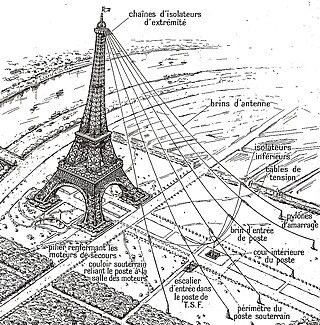
A radio listening station is a facility used for military reconnaissance, especially telecommunications reconnaissance by "intercepting" radio transmitter communications. In contrast to the original eavesdropping on an acoustic speech conversation, radio eavesdropping stations are used to eavesdrop on the information transmitted wirelessly using radio technology. For this purpose, highly sensitive radio receivers and suitable receiving antennas are used.

Hopscotch is a 1975 novel by Brian Garfield, in which a CIA field officer walks away from the Agency in order to keep from being retired and placed behind a desk, and invites the Agency to pursue him by writing an exposé and mailing chapters of it piecemeal to all the major intelligence agencies around the world, including the CIA. Hopscotch won the 1976 Edgar Award for Best Novel.

The United States Army Security Agency (ASA) was the United States Army's signals intelligence branch from 1945 to 1976. The Latin motto of the Army Security Agency was Semper Vigilis, which echoes the declaration, often mistakenly attributed to Thomas Jefferson, that "The price of liberty is eternal vigilance."
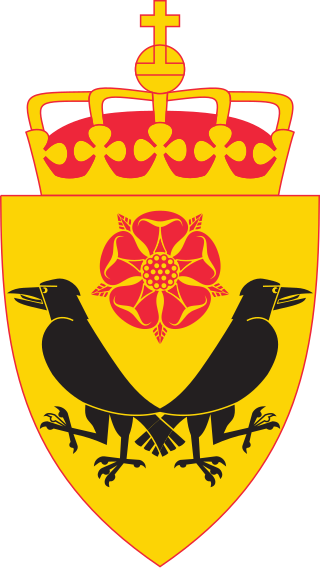
The Norwegian Intelligence Service (NIS) or Etterretningstjenesten is a Norwegian military intelligence agency under the Chief of Defence and the Ministry of Defence.
James W. Hall III is a former United States Army warrant officer and signals intelligence analyst in Germany who sold eavesdropping and code secrets to East Germany and the Soviet Union from 1983 to 1988.
Signals intelligence by alliances, nations and industries comprises signals intelligence (SIGINT) gathering activities by national and non-national entities; these entities are commonly responsible for communications security (COMSEC) as well.
Radiofrequency MASINT is one of the six major disciplines generally accepted to make up the field of Measurement and Signature Intelligence (MASINT), with due regard that the MASINT subdisciplines may overlap, and MASINT, in turn, is complementary to more traditional intelligence collection and analysis disciplines such as SIGINT and IMINT. MASINT encompasses intelligence gathering activities that bring together disparate elements that do not fit within the definitions of Signals Intelligence (SIGINT), Imagery Intelligence (IMINT), or Human Intelligence (HUMINT).
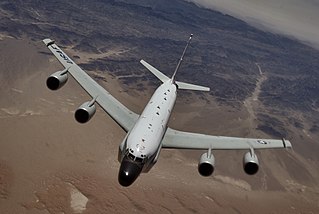
Signals intelligence operational platforms are employed by nations to collect signals intelligence, which is intelligence-gathering by interception of signals, whether between people or between machines, or mixtures of the two. As sensitive information is often encrypted, signals intelligence often involves the use of cryptanalysis. However, traffic analysis—the study of who is signalling whom and in what quantity—can often produce valuable information, even when the messages themselves cannot be decrypted.
Before the development of radar and other electronics techniques, signals intelligence (SIGINT) and communications intelligence (COMINT) were essentially synonymous. Sir Francis Walsingham ran a postal interception bureau with some cryptanalytic capability during the reign of Elizabeth I, but the technology was only slightly less advanced than men with shotguns, during World War I, who jammed pigeon post communications and intercepted the messages carried.
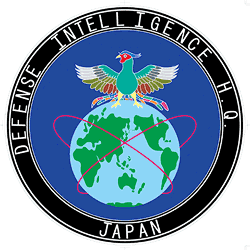
The Defense Intelligence Headquarters is a military intelligence and signal intelligence agency of the Japanese government, under the jurisdiction of the Japanese Ministry of Defense. It is currently one of the biggest Japanese intelligence agencies, with its creation and structure modeled after the American Defense Intelligence Agency.
Integrated Overhead SIGINT Architecture, or IOSA, incorrectly reported to be codenamed Intruder, was a spy satellite system to be operated by the United States National Reconnaissance Office, which would have replaced the Mentor and Mercury systems. The satellites were reported to have been under development in 1995. The Intruder system was designed to combine the electronic signals intelligence (ELINT) and communications intelligence (COMINT) roles of signals Intelligence (SIGINT) spacecraft, which had previously been performed by different satellites, the Rhyolite and Vortex series respectively.
After the end of World War II, all the Western allies began a rapid drawdown of military forces, including those of signals intelligence. At the time, the US still had a COMINT organization split between the Army and Navy. A 1946 plan listed Russia, China, and a [redacted] country as high-priority targets.
LOVEINT is the practice of intelligence service employees making use of their extensive monitoring capabilities to spy on their love interest or spouse. The term was coined in resemblance to intelligence terminology such as SIGINT, COMINT or HUMINT.

Mass surveillance in East Germany was a widespread practice throughout the country's history, involving Soviet, East German, and Western agencies.
Hüseyin Yıldırım is a Turkish-American auto mechanic who was sentenced to life imprisonment in the United States for his courier role in the espionage activities of U.S. serviceman James Hall III during the Cold War era. Yıldırım was later pardoned and extradited to his homeland, where he was sentenced to 17 years in prison but served only one day.
References
- ↑ "Voices Under Berlin: The Tale of a Monterey Mary - SpioneWiki". Spione.adept-press.com. 2010-05-16. Retrieved 2011-04-03.
- ↑ "Wes Britton's SpyWise". Spywise.net. 2005-03-15. Archived from the original on 2010-12-23. Retrieved 2011-04-03.
- ↑ "About the Author". Voices Under Berlin. 2010-11-09. Retrieved 2011-04-03.
- ↑ "sites". Fsbvg2.homestead.com. 2001-03-07. Retrieved 2011-04-03.
- ↑ "Don Lehmann USAFSS intelligence analyst COMINT SIGINT all-source at NSA, Korea, Taiwan, Germany". Vivausafss.org. Retrieved 2011-04-03.
- ↑ "Wes Britton's SpyWise". Archived from the original on 2016-03-03. Retrieved 2016-01-23., last retrieved on 2 April 2011
- ↑ MWSA DISPATCHES—November/December, 2011, p. 37
- ↑ "Tans Contest Winners". Southeast Asia US Army Security Agency Veterans Association. Retrieved 2012-06-26.
- ↑ "Conclusion of Interview with T.H.E. Hill". bellaonline.com. Retrieved 2011-04-09.
- ↑ "Americans in Berlin: A Cinderella Stamp Commemorative Issue - Blogcritics Culture". Blogcritics.org. Retrieved 2011-04-03.
- ↑ Cold War Times, February 2011 issue, p. 33.
- ↑ Novacheck, Lou (2011-08-04). "Cinderella Stamps Commemorate Fiftieth Anniversary of the Berlin Wall". Seattle Post-Intelligencer . Retrieved 2011-08-05.
- ↑ "Fiftieth Anniversary of the First Permanent SIGINT Presence on Teufelsberg, the operational home of Field Station Berlin: A Cinderella-Stamp Commemorative Issue". VoicesUnderBerlin. Retrieved 5 October 2013.
- ↑ http://voicesunderberlin.com/greatseal.html, last retrieved on 2 April 2011